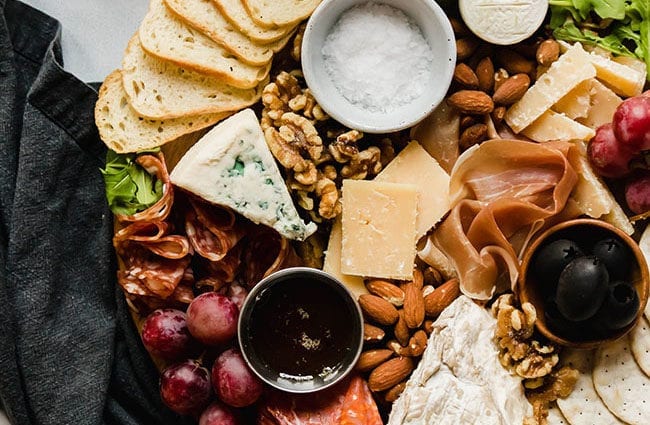Contents
If you love cheese as much as I love it, then you know that it goes well with wine, beer, spirits, fruits, vegetables, bread – and everything else. The reason for this is the variety of varieties and varieties of cheese, which allows you to choose almost any combination of tastes, textures and aromas. Cheese will not let you down even if you entrust it with the main role and decide to serve a cheese plate before, after, or even instead of dinner. The main thing in this is not to be mistaken with the choice, and my little advice, I hope, will help you with this.
Combine wisely
You can select cheese in different ways. As a rule, on a well-assembled cheese plate there are different types of cheeses – hard, soft, moldy, from cow, goat, sheep milk – but you can also offer different varieties of the same type. Hard cheeses such as Parmesan have a distinct grainy texture and a salty, slightly pungent taste. Semi-solid are softer, but they also feel “grain” due to the enzymes they contain. Pickled cheeses such as mozzarella have a delicate texture and mild flavor.
Finally, do not forget about soft cheeses like Camembert or Brie, and when serving blue cheese, do not offer more than 1-2 types, otherwise they will dominate. You can also build on the country of origin of the cheeses and serve up a French, Italian, or Spanish cheese platter, for example.
How to submit?
Remove the cheese from the refrigerator some time before serving to warm it up to room temperature. Hard cheeses are best cut into thin slices or cubes in advance, while soft cheeses intended for spreading on bread can be left whole. Arrange the cheeses on the plate so that they do not touch each other, remove the packaging, but leave the crust, and otherwise use common sense and a sense of beauty.
Less is better, but better
When planning the selection of cheeses that you will offer to your guests, do not rush to quantity. Ideally, you will need no more than 3-5 types of cheese, so pay special attention to quality. Proceed on the basis of 50 g per person, if you do not plan to serve anything other than a cheese plate, or half as much if you have a full lunch or dinner.
Decent framing
The cheeses served on a round wooden platter with special knives are sure to impress. However, you shouldn’t seriously worry about buying all of these tools if you are not going to use them often enough – a regular wooden cutting board and ordinary knives will do.
Best friends
Despite the fact that the cheese itself plays the first violin here, it should certainly be supplemented with an appropriate side dish so that the cheese plate sparkles like a faceted diamond. What should be served with cheese? Firstly, bread – toast, slices of baguette or rye bread, crispbread or crackers – make good cheeses companionship. It goes well with grapes and other fruits, dried or fresh – apples, pears, figs and dates. Lightly fried nuts and honey do not hurt.
Cheese and wine
You can write a whole treatise on the laws of combining cheese and wine, but all you need to know to get started is a couple of simple rules. First, you can’t go wrong if you decide to combine cheese and wine made in the same region (or at least one country), so it makes sense to build on this principle in further experiments. Secondly, choose more tannin wines for hard cheeses, and more delicate wines for cheeses with lighter flavors. Thirdly, the wine does not have to be red – mozzarella, brie and gouda go well with dry white wines, fontina, Roquefort and provolone with white sweet wines, and champagne and sparkling wines go well with cambozol and similar cheeses. for those who dare to build a cheese plate for 25-50 persons, and want to make it stylish and amazing.










